Fighting queens: when there are cows in the ring
Categories: Animals
By Pictolic https://pictolic.com/article/fighting-queens-when-there-are-cows-in-the-ring.htmlThe Canton of Valais is the birthplace of the unique Hérens cow breed. Members of this heavy family are usually very tough and strong and often fight among themselves to establish a hierarchy within the herd. Such fights take place in natural conditions, when the herds are taken out to pasture in the spring. When the shepherd drives the herd to the alpine meadows, the cows stand opposite each other, grapple with their horns and butt heads until one establishes supremacy over all the others.
(Total 9 photos)
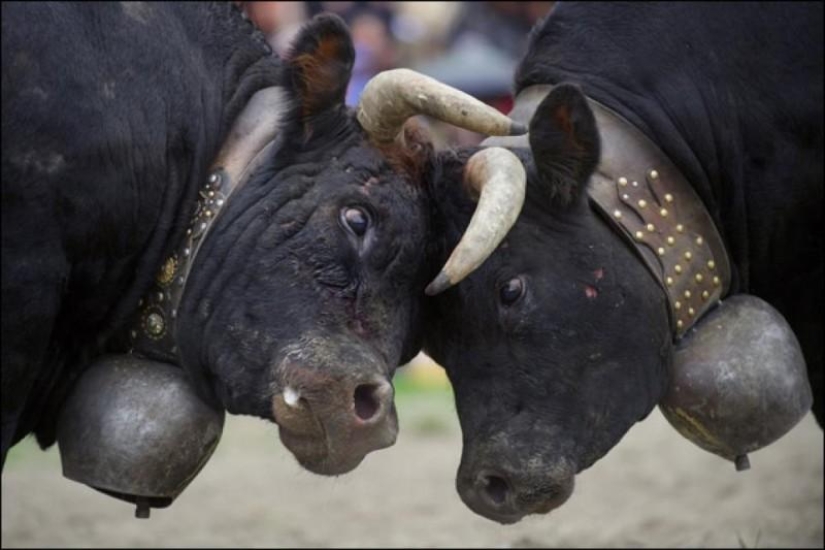
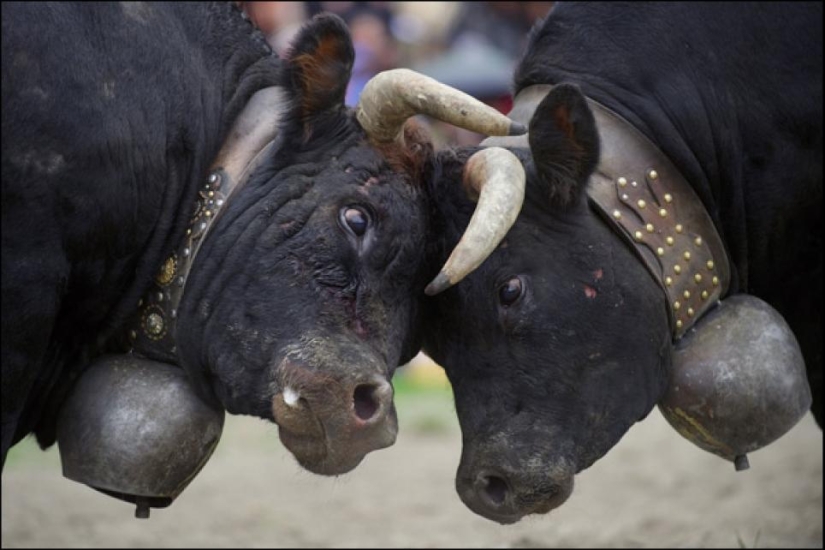
1.
Fighting technique During the duel, the cows simply butt heads, pushing their foreheads. They also use their horns to fight. Some prick their opponents with their horns, others hook the horns with the opponent and try to “roll” the opponent’s neck, experts call this technique “clutch technique”. The weaker animal leaves the “battlefield”, often some cows give up even before the fight, thus recognizing the superiority of the opponent. These duels take place exclusively among the cows of the herd, the bulls do not participate in them, and extremely rarely the cows receive even superficial wounds.
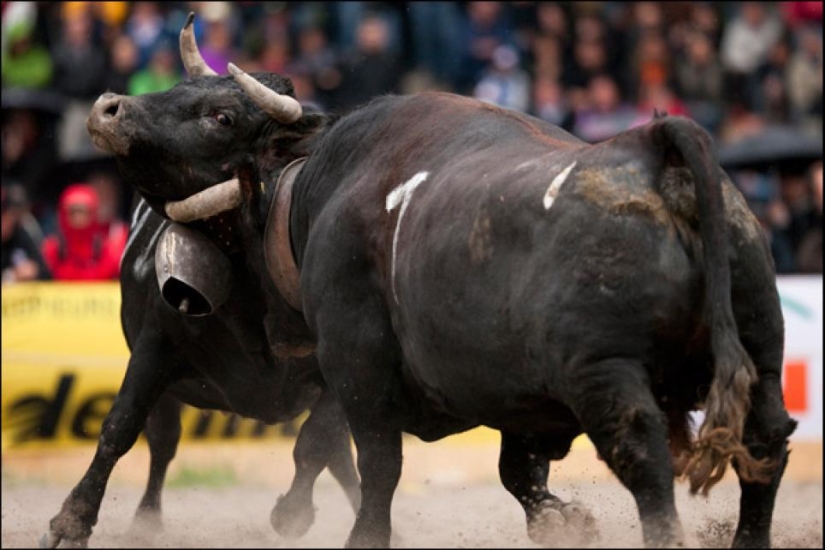
2.
Fighting Circumstances Hérens cows challenge their rivals in various situations in their natural habitat. After the winter spent in barns, in the spring they are released to pastures, and the cows of different owners are mixed in a common herd. Despite living through a long winter together, the cows begin to fight to establish the "queen" of the herd. At the end of spring, the cows rise to the alpine pastures, to the mountains. On the first day - a traditional procession in the mountains. Cows from different owners come together and intense fights take place. These days, called "inalpe", are the most important for fans of cow fights, as well as for all the guests of the canton of Valais who came here during this period. A real alpine festival is very often organized at the same time as the procession of the rise of the cows to the alpine pastures and the cow fights. There are just as many days like this as there are alpine pastures where Hérens cows graze in the canton of Valais. Such holidays take place at the end of May and in June. In autumn, herds descend from the alpine pastures down into the valleys. This period is called "desalpe". This time of the year also hosts a large number of different holidays. The "Queen" of each herd is crowned and decorated for this occasion with particular care.
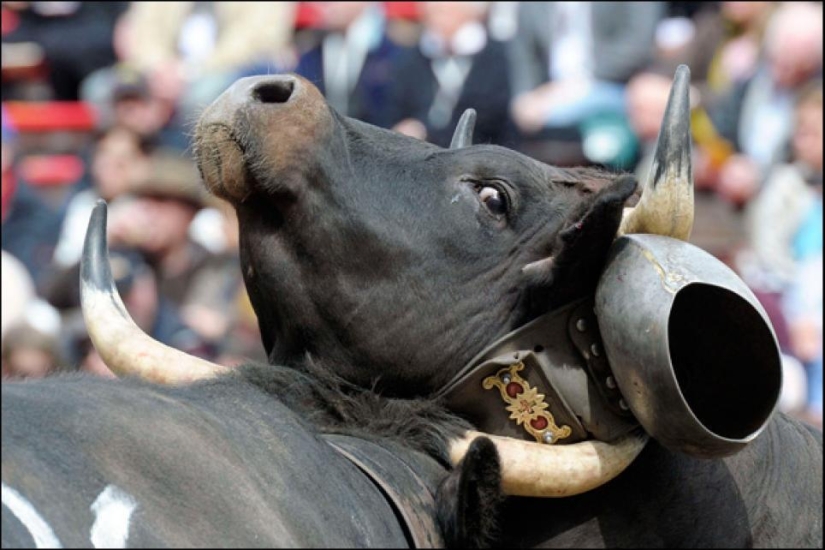
3.
Organized competitions People have taken advantage of the unique fighting character of the Hérens cows and organize cow fights for the public. Such "sporting" events have been held in Valais since 1922. Similar cowfights take place in the Aosta Valley in Italy and in Haute-Savoie in France. Small similar events take place in other regions of Switzerland, for example, in the canton of Vaud. In Valais, a dozen competitions are the culmination of a grand finale. There are usually twenty of them in the Aosta Valley, and two in Haute-Savoie. Over the years, these competitions have acquired strict rules and a clear organization. To keep the competition fair to the competitors, the animals are usually divided into several categories, usually five.
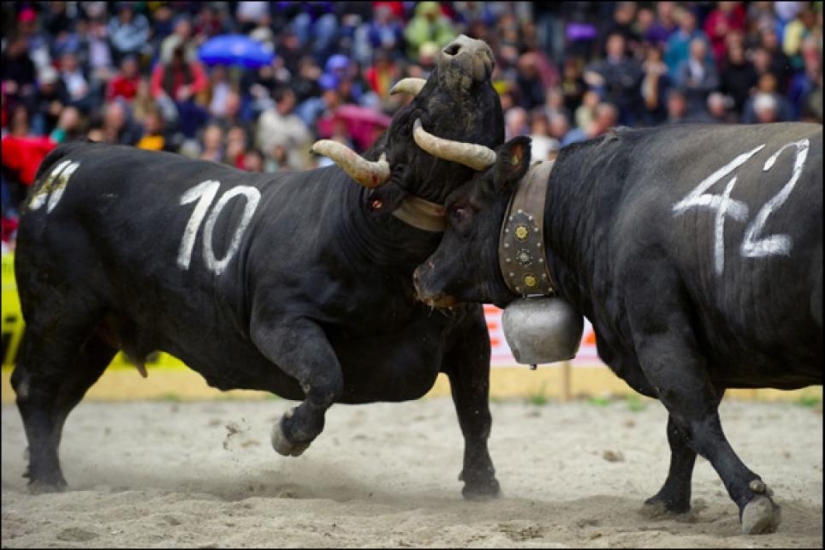
4.
Categories The fifth category is for heifers. Here the duel takes place between non-calving cows at the age of 2.5 years. The fourth category is for cows that have calved for the first time. Cows that have calved at least twice are assigned to the first three categories according to their weight. All cows are weighed and those over 600 kg fall into the first category. The most "slim" will fight in the third category, and the rest - in the second.
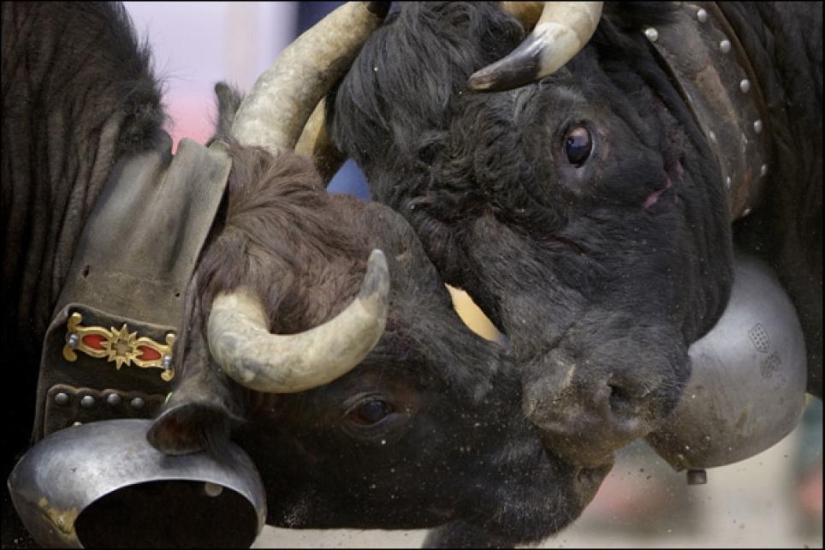
5.
Doping Control All cows entering the arena must be pregnant. For many years, during the competition, all animals were tested for doping. Not a single positive test was recorded. At the moment, such control has simply been abandoned as unnecessary.
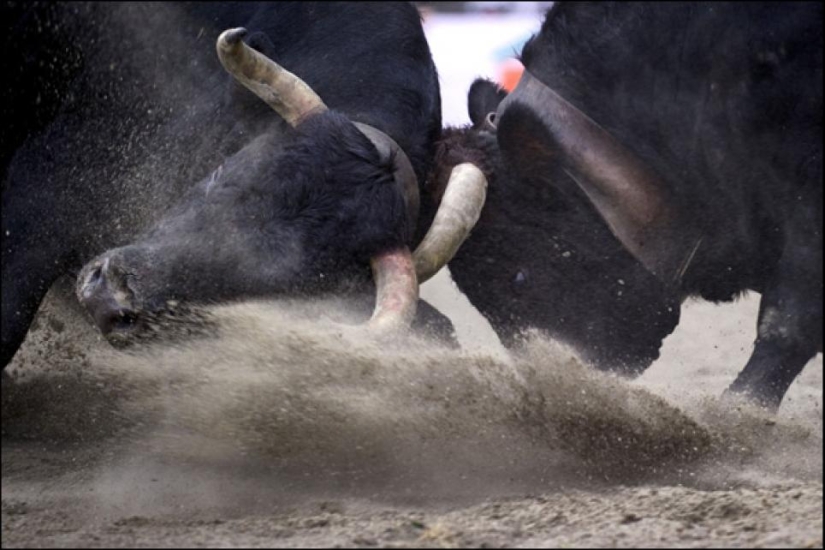
6.
Bout Rules Judges watch the bouts closely and count the number of bouts to establish the classification. The cow that loses three fights is eliminated from the fight, and the one that ran away from the opponent is automatically recognized as the loser. Cowfight day starts with knockout rounds. Animals in each category are divided into several groups from 12 to 20 participants (according to the number of participants). The best in each group advances to the final, which usually takes place in the afternoon. Cows in the final are also eliminated if they lose, until the six strongest remain. Each of the six remaining will fight with all five rivals in turn. The judges then evaluate each of them. The cow that beats 5 of her competitors in the final is recognized as the “queen” in her category. Only specialists are allowed to enter the arena. These are the judges. They have an obligation to see to it that the fights are fair. They will intervene if the third cow decides to duel with the two that are currently fighting each other. They also match those cows that have not yet competed.
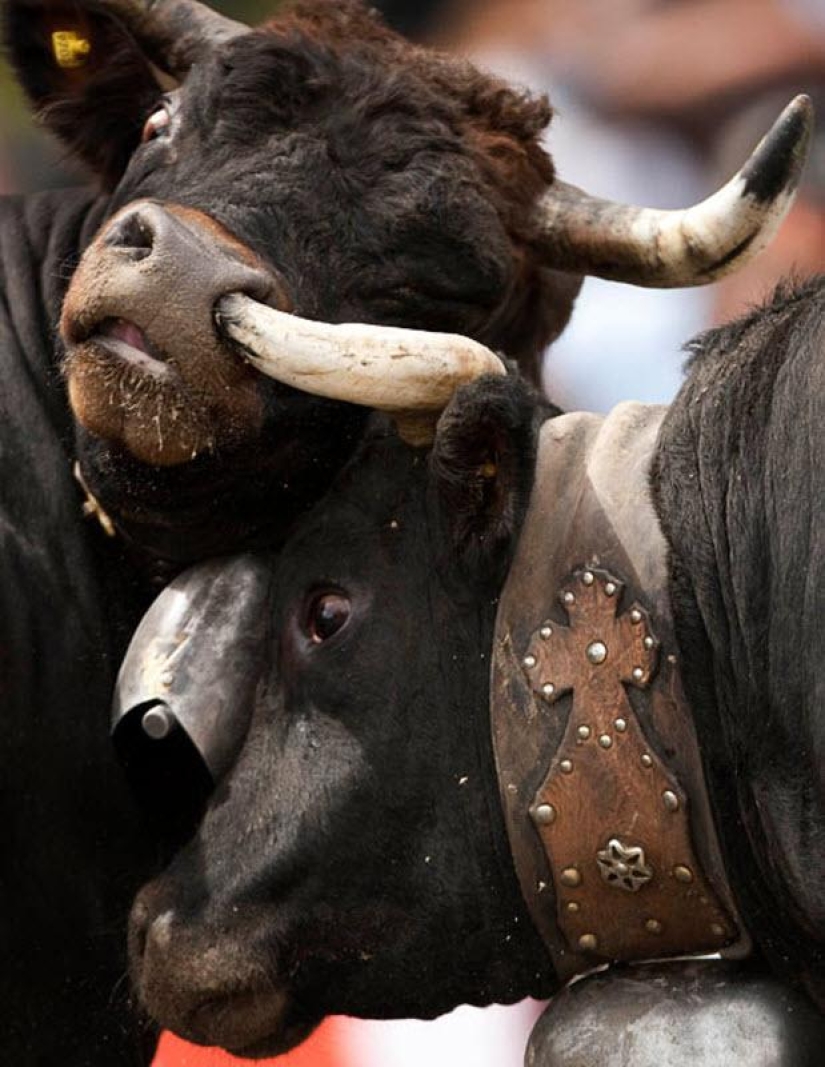
7.
Fighting season A large number of knockout fights take place throughout the year. The first six in each category advance to the grand final called the cantonal final, which takes place in Aproz near Sion in May. The competitions are held in the same order both in the elimination bouts and in the final. At the end of the day, the "queens" from categories 1 to 4 return to the arena for the final of the finals. The cow that has defeated all her rivals becomes the queen of the canton. The competitions that take place in the summer do not give the opportunity to participate in the cantonal final.

8.
Enthusiastic audience Dozens of competitions that take place in Valais throughout the year attract a large number of guests. In total, about 50,000 spectators watch these peaceful fights, and about 10,000 attend the cantonal final.

9.
Such is the enthusiasm and love for cow fights that Valais publishes a monthly Queens' Gazette, which publishes fight programs and information about the participants, and the local radio station Rhone FM has a weekly program dedicated to cow fights.
Keywords: Fighting | Cows | Switzerland
Post News ArticleRecent articles

Kitchen – one of the most popular places in the world. Here is the mystery of cooking a favorite food, family gatherings, ...

Man cave, or "man cave" — is embodied in the life of children's dreams of their own cozy nook where you can relax from bustle and ...
Related articles

Mud Queens — the Union of the lovers to fight in mud and blood, based in Chicago. Girls beat each other up, thrown off a ...

Bearded men are carriers of more germs than dogs. This conclusion was reached by Swiss scientists after a comparative study of ...

Witch hunts claimed the lives of thousands of women-young and old-between the 14th and 18th centuries. Mass hysteria over ...

In a world where fashion and marketing have long ceased to surprise, House of Oddities has gone one step further—it's ...